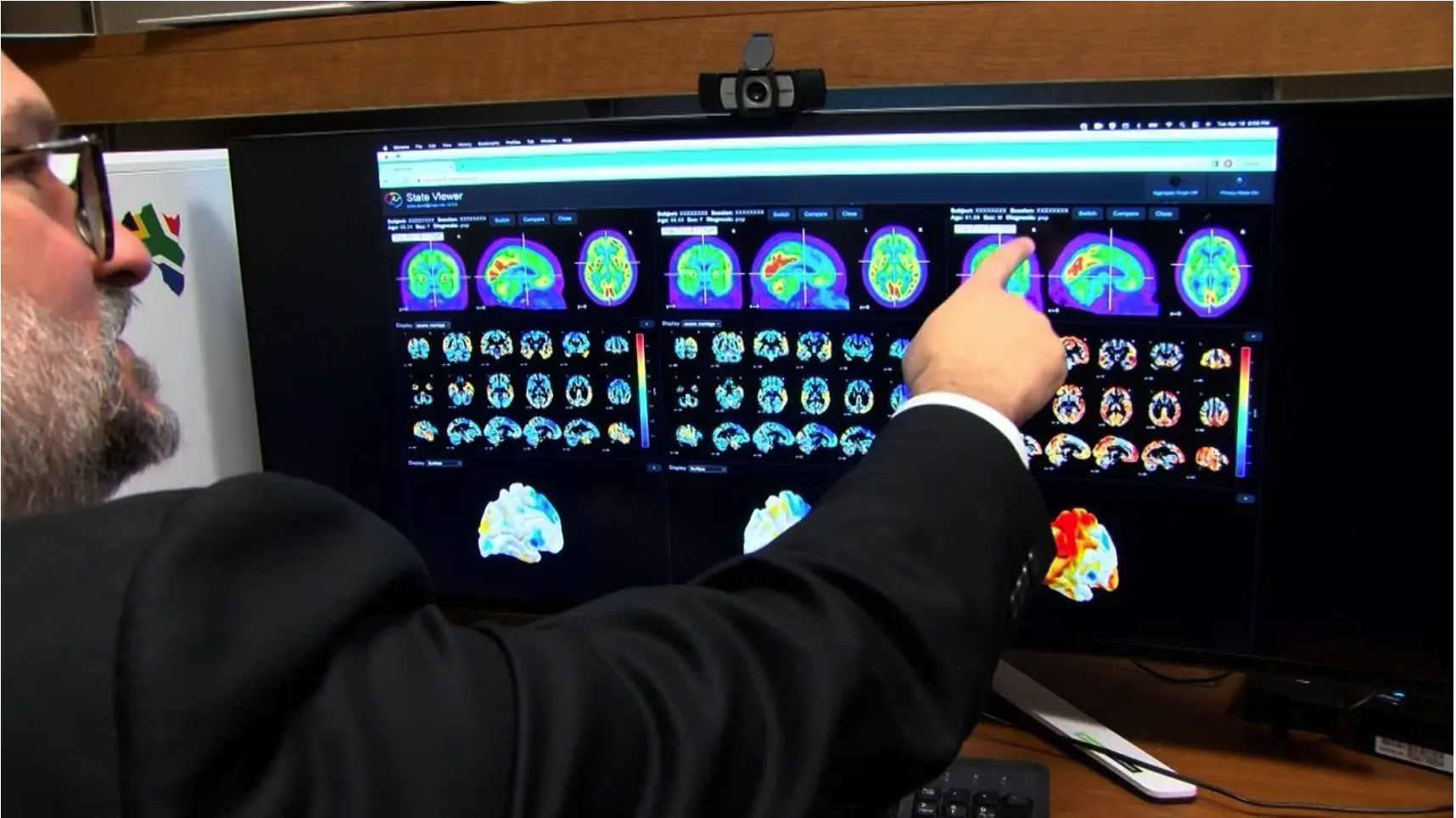Mayo Clinic Tests Neurology AI Program Using PET Scans to Detect Brain Diseases
Images

The Mayo Clinic Neurology Artificial Intelligence Program (NAIP) team is testing StateViewer, a Mayo-created platform that can take an individual patient's PET scan and apply artificial intelligence to find similar cases of brain disease in Mayo's distributed data network. By enhancing diagnostic accuracy, researchers envision StateViewer will support care teams in determining a dementia diagnosis — such as Alzheimer's disease, Lewy body and frontotemporal dementia —and help guide treatment decisions for patients.
"By training AI models on vast datasets of patient brain scans, Mayo's Neurology Artificial Intelligence Program is researching a level of fast detection and precise diagnosis of neurodegenerative diseases that support human expertise," says Dr David T. Jones, a Mayo neurologist and NAIP director.
"Making more precise diagnostic support tools widely available will significantly accelerate progress toward finding cures for these devastating brain conditions and ensuring existing therapies are used for everyone who will benefit."
Typically, when a patient is being evaluated for a brain disease, a clinician carefully reviews the person's PET scan, looking for characteristic patterns that correlate with different types of dementia. These brain scans play a critical role in determining the cause and stage of a patient's condition, which directly informs the treatment plan. Mayo Clinic clinicians bring a wealth of expertise to interpreting these complex images. However, distinguishing between different brain diseases can be challenging, even for experts, which can occasionally lead to uncertainties in diagnosis and treatment.
To address these challenges, the NAIP team at Mayo Clinic began developing an advanced platform in 2019. This platform leverages machine learning and large-scale data processing to analyze brain scans. Working within the Mayo Clinic Cloud, an innovative technology platform developed in collaboration with Google Cloud, NAIP's multidisciplinary team — including software engineers, data scientists and neurologists— harnesses decades of clinical imaging data. This unified cloud environment allows real-time access and analysis, applying state-of-the-art machine learning techniques to support clinicians in making more precise diagnoses.
"Data is the bedrock for any tool of this kind, and our cloud data infrastructure was the essential technology for bringing this platform into the clinic," says Dr Leland Barnard, head of data science and engineering with NAIP. "By integrating AI with clinician expertise, Mayo Clinic continues to push the boundaries of neurological care, improving diagnostic accuracy and patient outcomes."
The StateViewer platform generates and displays the results of an individual patient's PET scan compared with PET scans of thousands of other Mayo Clinic patients with potentially similar neurodegenerative conditions whose diagnoses had been confirmed through extensive evaluations, including detailed longitudinal research and autopsy studies. Strict privacy and security measures have been implemented throughout the research process to protect patients' data.
After verification and validation, StateViewer has been successfully piloted by Mayo neurologists as a research tool. These studies have demonstrated a significant enhancement in the accuracy of clinicians' interpretations of brain images, surpassing what is achievable with current tools alone. Under research, this tool can be used for patients in Mayo's Alzheimer's Disease Treatment Clinic with a PET scan available; the outputs of StateViewer may be reviewed at the weekly multidisciplinary case conference informing precision medicine-based recommendations for these patients.
"By combining AI analysis with innovative tools, this technology revolutionizes the way clinicians interpret brain scans, enhancing their ability to diagnose and manage patients with neurodegenerative diseases," says Dr John Stricker, NAIP lead software engineer.
In a recent retrospective test, the NAIP team compared expert neurologists' diagnoses with StateViewer's ability to accurately detect Lewy body dementia compared with posterior cortical atrophy or other often indistinguishable degenerative conditions. It is dicult to distinguish these conditions visually as they affect similar brain regions, making it an ideal situation to demonstrate the advantages of using machine learning to assist with clinical decision-making.
As seen in this test, StateViewer's underlying machine learning model presents a probability of each diagnosis and clearly indicates how they were assigned. StateViewer's output helped clinicians double their speed while reviewing brain scans and triple their diagnostic accuracy.
The technology "can pick out the needle in the haystack," Dr Jones says.
The NAIP team's goal is to expand the use of StateViewer technology outside of Mayo with the aim that it could be transformative on a global scale in the near future and expand access to these data-driven insights.
"The goal is that a Mayo Clinic expert opinion would be available, with the help of one simple test, no matter how far the patient is from our campuses," says Dr Jones.